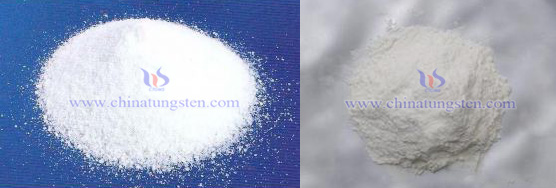Sodium Tungstate and SLS Composite Corrosion Inhibition to Carbon Steel1/2
- Details
- Category: Tungsten Information
- Published on Thursday, 07 January 2016 19:46
Water treatment agent is the generic terms of chemicals used in water treatment. It usually refers to chemicals used in wastewater treatment. It is widely used in petroleum, chemical industry, metallurgy, transportation, light industry, textile and other industrial sectors. Water treatment agent includes corrosion inhibitor, scale inhibitor, bactericide, flocculating agent, cleaning agent and so on. In practical application, people often use the compound formula of water treatment agent, or the integrated application of various types of water treatment agent. Therefore, we should not only pay attention to confrontation as a result of improper distribution between various components, but also make full use of synergies to increase efficiency.

Pipeline and equipment contacting with seawater chronically are subjected to corrosion damage. Accidents and great economic losses can be caused. So adding corrosion inhibitor is one of the important ways to control the corrosion. Cooling water corrosion inhibitors commonly used are chromate, nitrite and phosphate which are most toxic and not green. Sodium tungstate is a kind of avirulent and harmless inorganic corrosion inhibitors. Corrosion is more efficient after distribution with sodium lauroyl sarcosine (SLS). This article mainly introduces corrosion inhibition of sodium tungstate and SLS composite to carbon steel in simulated seawater. The experiment mainly adopts weight-loss method and electrochemical method.
Weightlessness method:
1. Burnish the lacing film light firstly. Swab it with alcohol and acetone. Weigh after cold wind blowing dry.
2. Hold right amount of simulate water in the big beaker equipped with a stirrer. After adding corrosion inhibitor, put it in 45 ℃ thermostat.
3. The lacing film will be prepared in suspension to corrosion medium. Start the blender to make the corrosive medium in the flow state.
4. Take out corrosion coupon after 48h, wrapped in filter paper. Put it in the dryer 12h to weigh. Measure the corrosion rate lastly.
Electrochemical method:
1. Use three electrode systems, including homemade Q235 steel electrodes as working electrode.
2. Working electrodes in metallographic pre grinding machine are burnished to a smooth surface step by step, and then clean with deionized water, alcohol and acetone in turn. Dry it with the cold wind.
3. Before the measurement, soak the working electrode in corrosion medium around 30 min to the corrosion potential. Then start testing from the corrosion potential. Finally calculate efficiency of the corrosion by Tafel polarization curve and ac impedance spectrum.
| Sodium Tungstate Supplier: Chinatungsten sodium-tungstate.com | Tel.: 86 592 5129696; Fax: 86 592 5129797;Email:sales@chinatungsten.com |
| Tungsten News & Prices, 3G Version: http://3g.chinatungsten.com | Molybdenum News & Molybdenum Price: http://news.molybdenum.com.cn |



 sales@chinatungsten.com
sales@chinatungsten.com